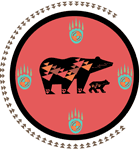Hyslop, P. (2012). Restorative justice in rural Alaska. Alaska Journal of Dispute Resolution. https://www.narf.org/nill/documents/2012-ak_jrnl_dispute_resolution_pp17-26.pdf
This website is supported by Grant Number 90CZ0034-01-00 from the Children’s Bureau within the Administration for Children and Families, a division of the U.S. Department of Health and Human Services. Neither the Administration for Children and Families nor any of its components operate, control, are responsible for, or necessarily endorse this website (including, without limitation, its content, technical infrastructure, and policies, and any services or tools provided). The opinions, findings, conclusions, and recommendations expressed are those of the author(s) and do not necessarily reflect the views of the Administration for Children and Families and the Children’s Bureau.

